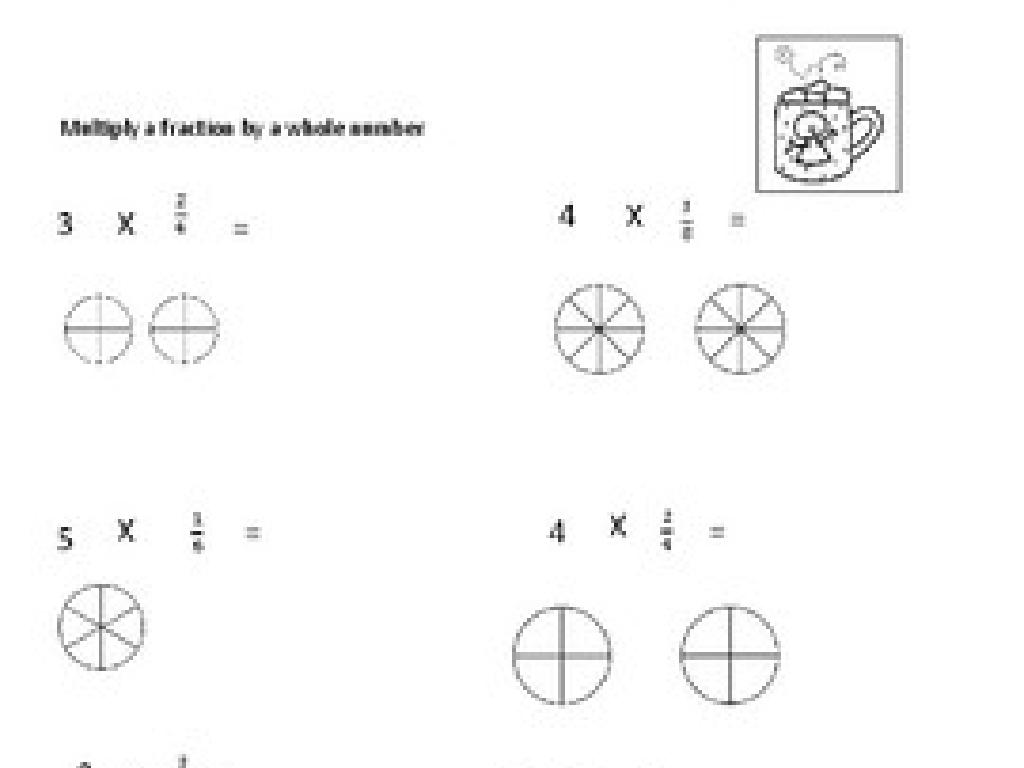Convert Time Units
Subject: Math
Grade: Fourth grade
Topic: Time
Please LOG IN to download the presentation. Access is available to registered users only.
View More Content
Introduction to Time Conversion
– Understanding time’s role
– Time helps us organize our day.
– Review: seconds, minutes, hours
– 60 seconds = 1 minute, 60 minutes = 1 hour
– Today’s goal: convert time units
– Learn to change minutes to hours, etc.
– Practice with real examples
– Use examples like cooking times or TV shows.
|
This slide introduces the concept of time conversion to fourth-grade students. Begin by discussing the importance of time in daily life, such as scheduling activities and understanding durations. Review the basic units of time, ensuring students recall how many seconds are in a minute and how many minutes are in an hour. The main objective is to teach students how to convert between these units, a skill that is practical for activities like cooking, where a recipe might require 45 minutes, and they need to understand that is the same as three-quarters of an hour. Incorporate hands-on practice with examples that are relevant to their experiences, such as the length of a favorite TV show or the time it takes to get to school.
Understanding Time: Seconds, Minutes, and Hours
– Seconds in a minute
60 seconds make up 1 minute.
– Minutes in an hour
There are 60 minutes in 1 hour.
– Visualize time relationships
Picture a clock: Seconds tick by, minutes grow, and hours build.
– Practice time conversion
|
This slide is aimed at helping fourth-grade students grasp the concept of time conversion. Start by explaining that there are 60 seconds in a minute, which can be visualized by the second hand completing one full rotation around the clock. Then, discuss that an hour is made up of 60 minutes, which is seen when the minute hand completes a rotation. Use visual aids like a clock face to show these relationships. Encourage students to think of activities that take about a minute or an hour to further solidify the concept. As an activity, have students practice converting between seconds, minutes, and hours with various examples.
Converting Minutes to Hours
– Learn the conversion ratio
– 60 minutes equal 1 hour
– Example: 120 minutes to hours
– 120 minutes is 2 hours
– Practice Problem: 90 minutes
– We’ll solve 90 minutes as a class
– Understand how to convert
|
This slide is aimed at teaching fourth graders the basic concept of converting minutes to hours. Start by explaining the conversion ratio, which is the foundation of understanding time conversion. Use the example of 120 minutes to demonstrate how to apply this ratio in a practical situation, showing that 120 minutes is equal to 2 hours. Then, engage the class with a practice problem by converting 90 minutes to hours together. This will help reinforce the concept and ensure that students are able to apply the conversion ratio independently. Encourage students to ask questions and provide assistance as needed. The goal is for students to become comfortable with converting time units from minutes to hours.
Converting Hours to Minutes
– 1 hour equals 60 minutes
– Multiply to convert hours to minutes
– Use multiplication for conversion
– Example: 2 hours to minutes
– 2 hours x 60 minutes/hour = 120 minutes
– Practice: Minutes in 3.5 hours?
– Let’s calculate together in class!
|
This slide introduces the concept of converting hours to minutes, a fundamental skill in understanding time. Start by explaining that each hour is made up of 60 minutes. To convert hours into minutes, students should multiply the number of hours by 60. For example, for 2 hours, they would calculate 2 x 60 to get 120 minutes. Provide a practice problem for the class to solve together, such as converting 3 and a half hours into minutes. This will help solidify their understanding through hands-on practice. Encourage students to think of times when they might need to convert hours to minutes in real life, such as baking or timing a race.
Converting Hours to Seconds
– Understanding time conversion
– 1 hour equals 60 minutes
– 1 minute equals 60 seconds
– Convert 1 hour to seconds
– Example: 1 hour is 60 minutes, and each minute is 60 seconds, so 1 hour is 60 x 60 = 3600 seconds.
|
This slide introduces students to the concept of converting larger time units into smaller ones, specifically converting hours to seconds. Start by explaining that time can be broken down from hours to minutes and then to seconds. Reinforce the idea that there are 60 minutes in an hour and 60 seconds in a minute. Use the example to show students step-by-step how to multiply 60 minutes by 60 seconds to find out how many seconds are in one hour. For the practice problem, guide students to apply the same method to convert 2 hours into seconds, which should lead them to calculate 2 hours x 60 minutes/hour x 60 seconds/minute = 7200 seconds. Encourage students to work through the problem and share their answers.
Using Time Conversion in Real Life
– Importance of time conversion
– Helps in planning and avoiding confusion
– Real-life conversion scenarios
– Examples: Baking durations, flight times
– Cooking, travel, and scheduling
– E.g., Minutes to hours for recipes, or hours to days for trips
– Group activity discussion
|
Understanding how to convert time units is crucial for everyday activities and helps in effective planning and time management. For instance, when cooking, it’s important to convert minutes to hours to understand baking durations. In travel, converting flight times to local time zones is essential. Scheduling daily activities requires an understanding of time conversion to avoid overlaps and ensure punctuality. The group activity will encourage students to think of personal experiences where they had to convert time units, such as during family trips, cooking with parents, or planning their day, and share these scenarios with the class. This will help solidify their understanding of the concept through relatable examples.
Class Activity: Time Conversion Challenge
– Pair up for a conversion quest
– Solve various time conversion problems
– Convert hours to minutes, minutes to seconds, etc.
– Share your solutions with the class
– Class review of answers
– Discuss different methods used
|
This activity is designed to encourage collaboration and application of time conversion skills. Students will work in pairs to tackle a series of problems that require them to convert between different units of time, such as hours to minutes, minutes to seconds, and vice versa. Provide a worksheet with a variety of problems for them to solve. After the activity, bring the class together to review the answers. This will allow students to learn from each other and understand different approaches to solving the problems. Possible activities: 1) Converting event durations from hours to minutes, 2) Calculating the number of seconds in given minutes for short timed activities, 3) Converting their age from years to months, and 4) Converting school day start and end times into total minutes.
Wrapping Up: Time Conversion
– Recap time unit conversions
– Understand practice significance
– Regular practice solidifies learning
– Homework: Conversion worksheet
– Complete the provided worksheet at home
– Be ready to discuss answers
– We’ll review the worksheet in the next class
|
As we conclude today’s lesson on converting time units, it’s crucial to emphasize the importance of practice in mastering this skill. The homework assignment involves a worksheet that reinforces the concepts learned in class. Encourage students to attempt the worksheet independently, reminding them that practice is key to becoming proficient in time conversions. Let them know that the next class will begin with a discussion of their answers, providing an opportunity to clarify any doubts and celebrate their successes.






